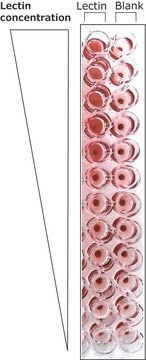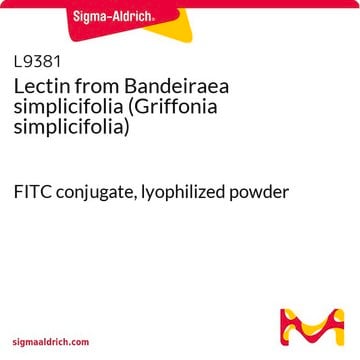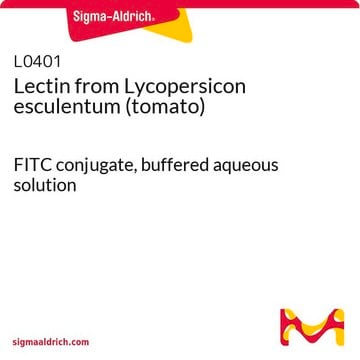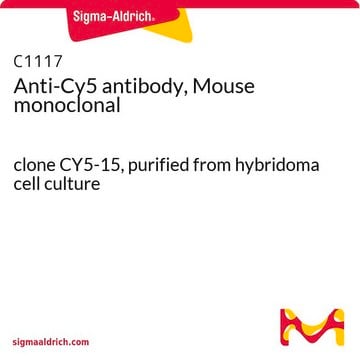L2140
Lectin from Bandeiraea simplicifolia (Griffonia simplicifolia)
Isolectin B4 (BSI-B4), biotin conjugate, lyophilized powder
Synonym(s):
Bandeirea simplicifolia agglutinin, BS-I
About This Item
Recommended Products
biological source
Bandieraea simplicifolia
Quality Level
conjugate
biotin conjugate
form
lyophilized powder
potency
<50 μg per mL agglutination activity (using human blood group B erythrocytes)
composition
Protein, ~95% E1%/280
extent of labeling
3-6 mol biotin per mol protein
storage temp.
−20°C
Looking for similar products? Visit Product Comparison Guide
General description
Application
Biochem/physiol Actions
Other Notes
Physical form
Analysis Note
Storage Class Code
11 - Combustible Solids
WGK
WGK 3
Flash Point(F)
Not applicable
Flash Point(C)
Not applicable
Personal Protective Equipment
Certificates of Analysis (COA)
Search for Certificates of Analysis (COA) by entering the products Lot/Batch Number. Lot and Batch Numbers can be found on a product’s label following the words ‘Lot’ or ‘Batch’.
Already Own This Product?
Find documentation for the products that you have recently purchased in the Document Library.
Customers Also Viewed
Our team of scientists has experience in all areas of research including Life Science, Material Science, Chemical Synthesis, Chromatography, Analytical and many others.
Contact Technical Service













